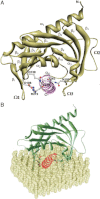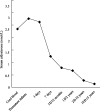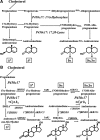The molecular biology, biochemistry, and physiology of human steroidogenesis and its disorders
- PMID: 21051590
- PMCID: PMC3365799
- DOI: 10.1210/er.2010-0013
The molecular biology, biochemistry, and physiology of human steroidogenesis and its disorders
Erratum in
- Endocr Rev. 2011 Aug;32(4):579
Abstract
Steroidogenesis entails processes by which cholesterol is converted to biologically active steroid hormones. Whereas most endocrine texts discuss adrenal, ovarian, testicular, placental, and other steroidogenic processes in a gland-specific fashion, steroidogenesis is better understood as a single process that is repeated in each gland with cell-type-specific variations on a single theme. Thus, understanding steroidogenesis is rooted in an understanding of the biochemistry of the various steroidogenic enzymes and cofactors and the genes that encode them. The first and rate-limiting step in steroidogenesis is the conversion of cholesterol to pregnenolone by a single enzyme, P450scc (CYP11A1), but this enzymatically complex step is subject to multiple regulatory mechanisms, yielding finely tuned quantitative regulation. Qualitative regulation determining the type of steroid to be produced is mediated by many enzymes and cofactors. Steroidogenic enzymes fall into two groups: cytochrome P450 enzymes and hydroxysteroid dehydrogenases. A cytochrome P450 may be either type 1 (in mitochondria) or type 2 (in endoplasmic reticulum), and a hydroxysteroid dehydrogenase may belong to either the aldo-keto reductase or short-chain dehydrogenase/reductase families. The activities of these enzymes are modulated by posttranslational modifications and by cofactors, especially electron-donating redox partners. The elucidation of the precise roles of these various enzymes and cofactors has been greatly facilitated by identifying the genetic bases of rare disorders of steroidogenesis. Some enzymes not principally involved in steroidogenesis may also catalyze extraglandular steroidogenesis, modulating the phenotype expected to result from some mutations. Understanding steroidogenesis is of fundamental importance to understanding disorders of sexual differentiation, reproduction, fertility, hypertension, obesity, and physiological homeostasis.
Figures
















References
-
- Steiger M, Reichstein T. 1937. Desoxy-cortico-steron (21-oxy-progesteron) aus Δ 5–3-oxy-atio-cholensaure. Helv Chim Acta 20:1164–1179
-
- Kendall EC, Mason HL, McKenzie BF, Myers CS, Koelsche GA. 1934. Isolation in crystalline form of the hormone essential to life from the supranetal cortex: its chemical nature and physiologic properties. Trans Assoc Am Physicians 49:147
-
- Miller WL. 1988. Molecular biology of steroid hormone synthesis. Endocr Rev 9:295–318 - PubMed
-
- Seyle H. 1946. The general adaptation syndrome and the diseases of adaptation. J Clin Endocrinol 6:117–230 - PubMed
-
- O’Malley BW. 2005. A life-long search for the molecular pathways of steroid hormone action. Mol Endocrinol 19:1402–1411 - PubMed
Publication types
MeSH terms
Substances
Grants and funding
LinkOut - more resources
Full Text Sources
Other Literature Sources
Medical

